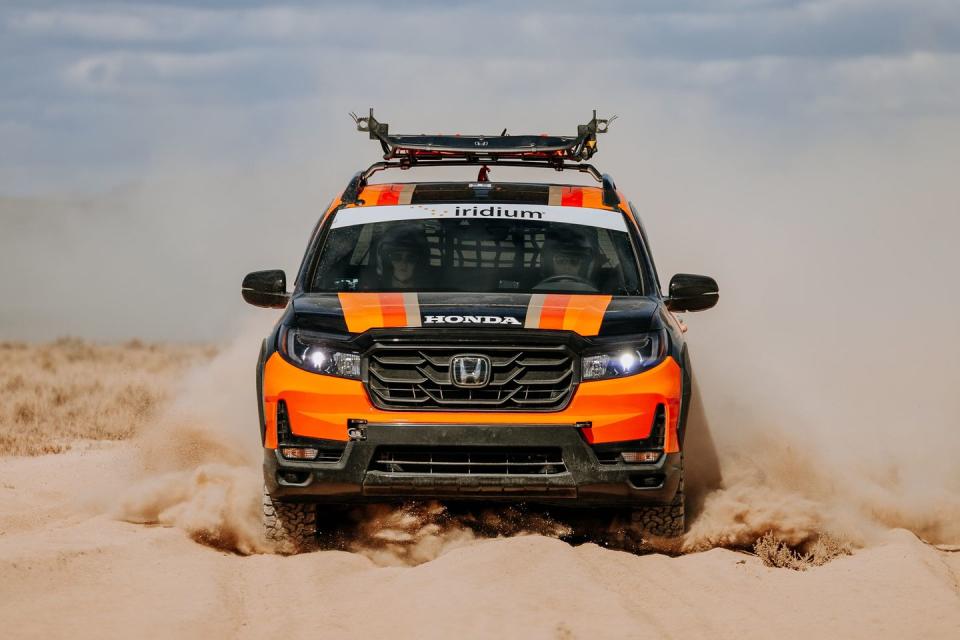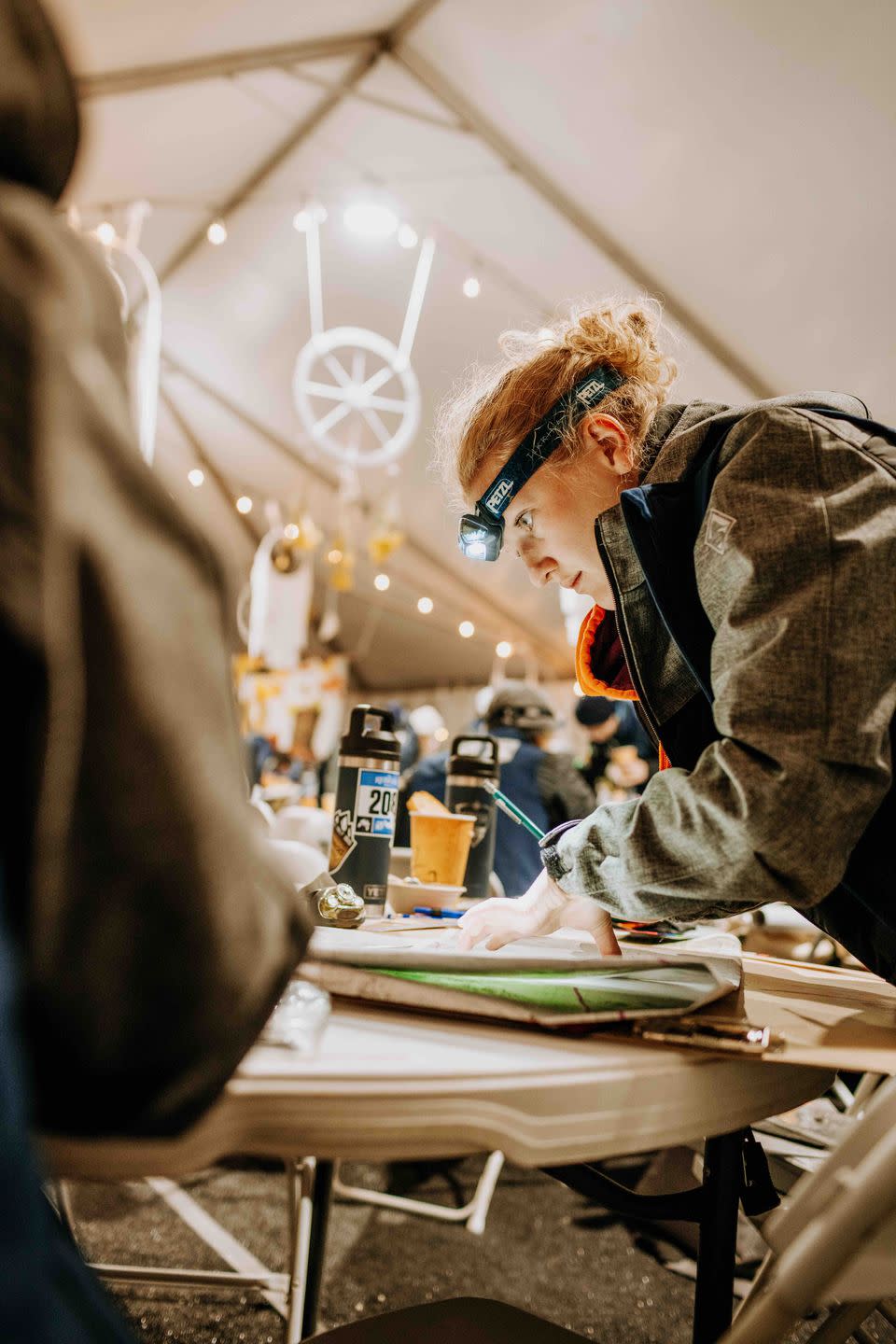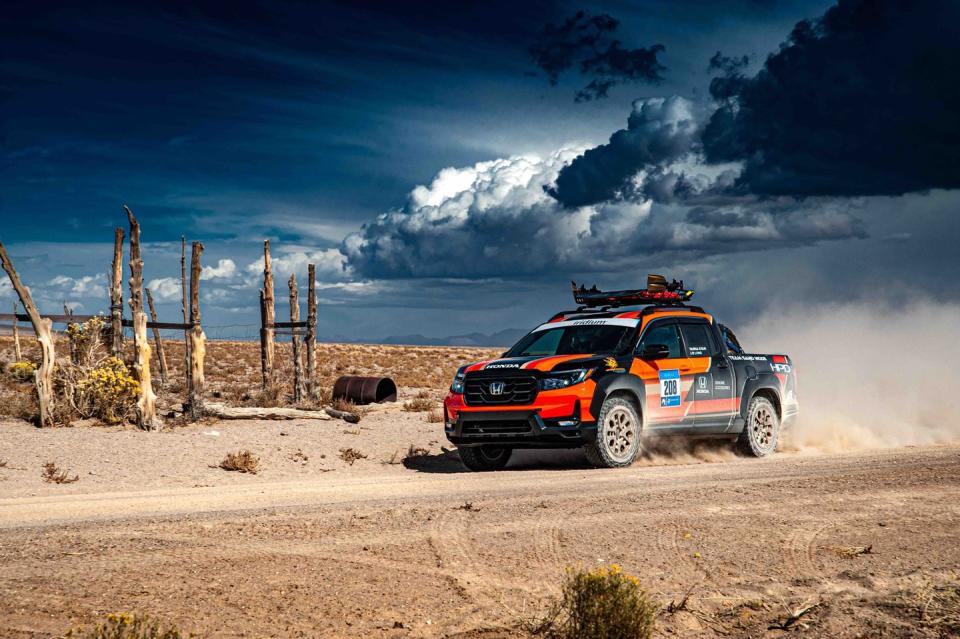How To Train Your Body And Your Mind Like An Off-Road Race Car Driver

Tasha Krug, an engineer at Honda, spends almost six months every year modifying a Honda Ridgeline pickup truck to prepare for the grueling eight-day Rebelle Rally.
The all-women, off-road navigational competition covers 1,500 miles of unforgiving desert in California and Nevada. The catch? There are no GPS or cell phones allowed. Competitors must find their way using only maps and a compass. (And for Krug, it's a hobby; something she does in her spare time.)
"You get hooked on it," she says. "You feel battle-bonded with your teammate and fellow competitors."
Jeff Proctor, on the other hand, is a professional driver and team principal for Honda Factory's Off-Road Racing Team. He relies on high-tech fitness trackers, biometrics, and data to get an edge. Painstaking preparation is how he stays laser-focused enough to race for, say, nine hours straight on high-speed dirt trails, rocky terrain, and high elevations.
He also trains with a triathlete coach so he can push his body to "the absolute limits." Last November, Proctor's team won the Baja 1000, the most demanding and dangerous off-road race in North America.
What connects Krug and Proctor, besides the love of the open (off) road? A focus on training their mind and body to achieve incredible feats. So whether you're angling for a new PR or are just trying to rally through a tough week, take some pointers from these endurance drivers.
Listen to your body.
Proctor uses a WHOOP fitness tracker to monitor his heart rate, sleep, and recovery: "It just backs up how you feel." Then, leading up to race day, he makes sure that he's well-rested and doesn't overtrain.

Try functional training.
When Krug and her co-driver modified their Honda Ridgeline truck to be rally-ready, they discovered that their new 55-pound wheels and tires were tough to lift. So Krug, a soccer player, began weight training with dumbbells and tires lying around in her garage. First, she'd lift the tires from the bed of the truck then install and uninstall them five times in a row.
Proctor does biometric workouts that are core-focused to keep him grounded during races. "Your core gets the biggest workout in those trucks," he says. "You don't have anything else to grab or brace yourself with. It's all core stability." The former motocross rider regularly logs 40 to 50-mile road bike rides to mentally prepare himself to endure long stretches behind the wheel.
Recreate the conditions.
The first year Krug did the Rebelle Rally, she figured out the source of her neck pain and headaches during the competition: Her helmet. "You're wearing it for 10 to 12 hours, eight days straight," she recalls. And when you're navigating, you're looking down at a map most of the time.

Now, she always wears a helmet during practice runs or while mapping mock navigation problems. And before a race, she'll wear her helmet around the house to get used to carrying the extra weight.
Adjust your sleep schedule.
Because there are no phones allowed at Rebelle Rally, competitors wake up the old-fashioned way: with someone clanking a cowbell at 5 a.m. At home, Krug sets a cowbell alarm for 5 a.m. a few weeks before the race to get her body accustomed to waking up in the dark. After that, she makes it a point to get out of bed and stay awake for at least ten minutes.
Go simple with nutrition on race day.
When you're getting jostled catching big air during jumps, the last thing you need is an angry stomach. So Proctor sticks to a protein shake, peanut butter, and a banana or a hard-boiled egg for breakfast before a race.
For Tasha, 10 or 12-hour days in a car means that there's no time to stop for lunch. So she and her co-driver eat a big breakfast and dinner at camp, then pack plenty of energy bars and snacks to graze during the day.
Focus on hydration.
"You have to be physically fit to race, but hydration and the mental focus is much more important," says Proctor. "It's the key."
Behind the wheel, he drinks his calories. Proctor worked with a nutrition lab to create a unique drink mix formulated for his body. His race suit monitors his sweat levels and automatically dispenses the electrolyte-packed beverage from a tube in his helmet whenever his hydration levels dip.
Learn from your mistakes—and keep going.
Tasha's persevered through windstorms, white-out conditions, and the inevitable accident during rallies. Once, she miscalculated the height of a drop and ended up nose-diving the truck straight into the ground. "That was the most heartbreaking moment ever because it crashes your confidence," she recalls.

But with the clock ticking, she and her partner snapped back into engineering mode to get the truck back on course. "You have to accept that it happened and move on," she says. "You don't dwell on anything. You figure out what caused the problem. You figure out how you can get out of it. And then you execute it."
Make time for recovery.
Proctor shifts gears with his right hand more than a thousand times during a race. To ease upper body aches, the driver schedules regular sports massages and cryotherapy, and red light therapy to keep inflammation down.
"I use alternative therapies to stay prepared and ready to battle for nine hours in the middle of nowhere," Proctor says. "I live and die by cryo preparation."

After eight days without modern technology, Tasha has learned that she needs a few days to ease herself back into life.
"You're not connected to the world at all," she says, joking that it takes a minute to remember all her passwords when she returns. "You're not checking e-mail. You're not catching up on social media. You're not texting anybody."
But once she's rested for a few days, she's ready to go all over again.
"It is mentally and physically challenging and exhausting, but at the same time, it is an extremely rewarding competition," she says. "You learn a lot about yourself and your co-driver. And you become more one with nature. You're just more in tune with yourself and overall have a much higher appreciation for life."
You Might Also Like